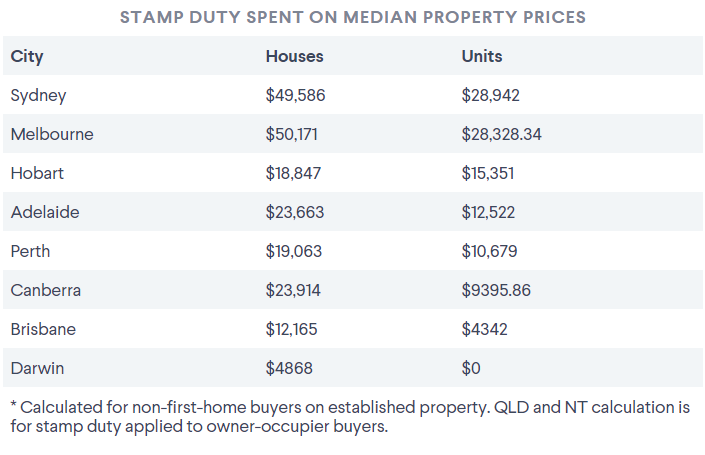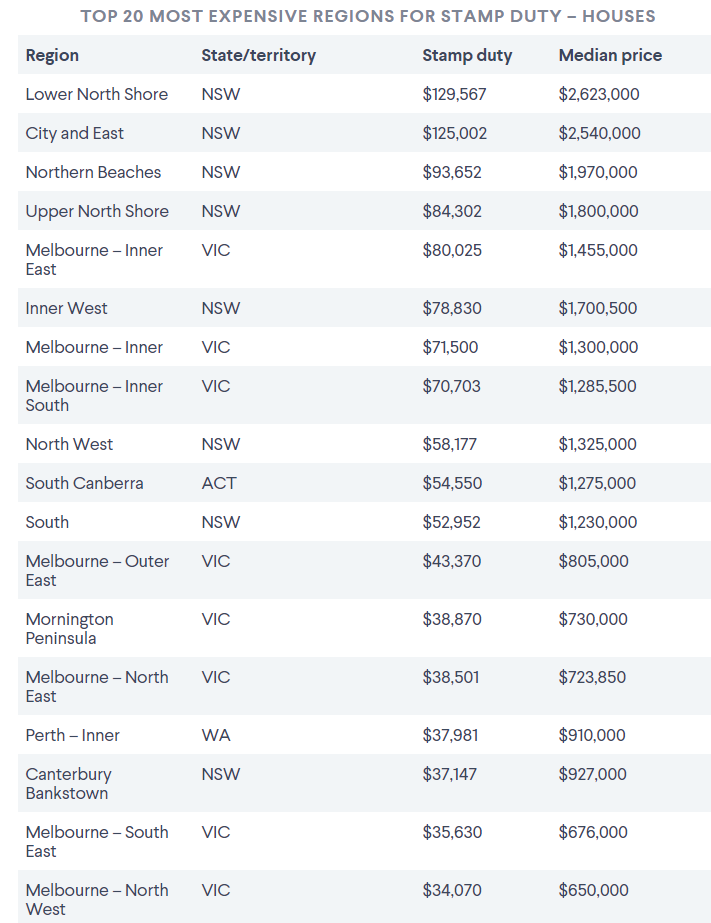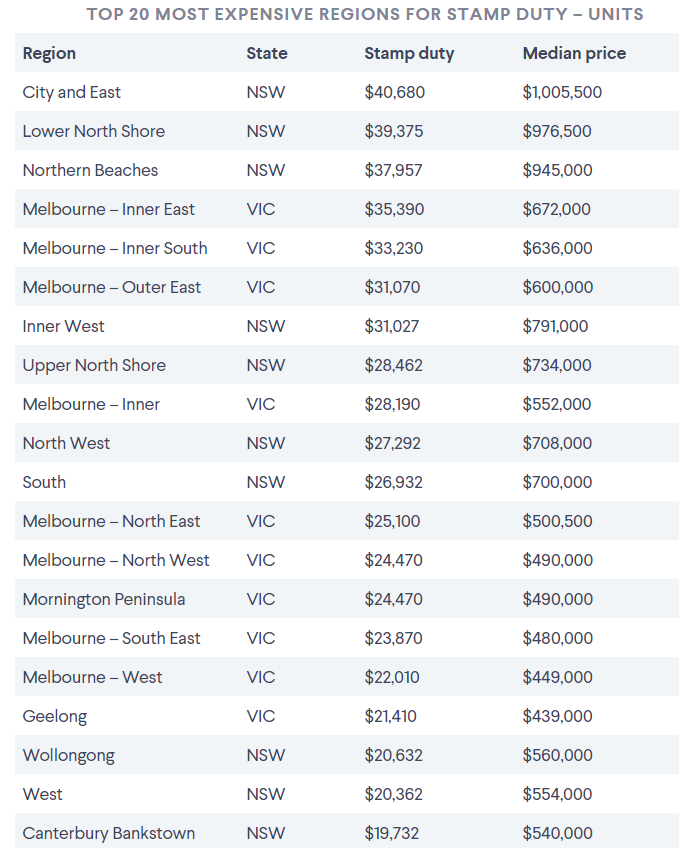Source: Kate Burke, Domain
House hunters could save up to six-figure sums on stamp duty if tax systems are reformed in the wake of the coronavirus pandemic, new figures show.
New analysis from Domain has found that stamp duty bills soar well above $100,000 for median-priced properties in some parts of the country, with Melbourne and Sydney buyers the hardest hit.
Stamp duty has been back in the spotlight in recent weeks, with the NSW government announcing plans to scrap what they consider to be an “inefficient” tax, and speculation the Victorian government will follow suit, last week signalling the need to review its revenue base.
Melbourne buyers currently spend the most on stamp duty, also known as transfer duty, with Domain figures showing they pay $50,171 to the government's coffers for a median-priced house of $918,350.
While Sydney's median house price comes in at a whopping $250,000 more than Melbourne's, its home buyers actually pay less in stamp duty. A house purchased at the current median of $1,168,806, would cost $49,586 in stamp duty.

Buyers in Canberra, where stamp duty is already being phased out, pay $23,914 in duty for a median-priced house. Stamp duty is lowest for houses in Brisbane and Darwin at $12,165 and $4868, respectively.
House buyers in Sydney's affluent lower north shore currently fork out the most on stamp duty, spending $129,567 on the region's median house price of $2.623 million, according to Domain figures. They're followed by buyers in Sydney's inner city and eastern suburbs, the northern beaches, upper north shore and Melbourne's inner east.
Pockets of Sydney and Melbourne make up the bulk of the most costly regions for stamp duty, due to their higher house prices. However, South Canberra, inner Perth and North Canberra are also among the top 20 with stamp duty on a median house price costing $54,550, $37,981, and $32,230, respectively.

Donovan Murphy of Di Jones Lower North Shore said homeowners often decided to stay put in properties that no longer suited their needs, after doing the math on how much they would spend in duty.
“We're in different times, but in the past five years it's not uncommon for us to head into periods of lack of supply of housing,” he said. “[Scrapping stamp duty] would get people engaging in selling a hell of a lot more.”
Toby Parker of Belle Property Balwyn echoed his sentiments, saying high stamp duty in Melbourne's inner east – at more than $80,000 for houses and more than $35,000 for units – discouraged people from moving and created housing supply shortages.
While scrapping stamp duty, one of the biggest sources of tax revenue for the states and territories, would encourage more people to move house and potentially reduce the time taken to save a deposit, experts warn it would also push prices higher.
Domain economist Trent Wiltshire said stamp duty was a financial barrier preventing people from upsizing, downsizing and moving locations for work.

“People are buying and selling at a lower rate than they did 10, 20 years ago and one of the reasons for that is the cost of stamp duty which has been rising at a rapid rate,” he said.
He added: “But if stamp duty is abolished, prices would probably rise. Buyers have saved a deposit plus stamp duty, and they're willing to spend it … they're not going to bid up to that amount, but could go close to that.”
Mr Wiltshire said transitioning from stamp duty to a broad-based land tax – as is being done in the ACT – would do more for the economy than housing affordability.
He noted that when stamp duty was scrapped for Victorian first-home buyers on properties worth up to $600,000, there was strong price growth at the lower end of the market because buyers had more to spend.
But Mr Wiltshire said price rises would likely be capped by a transition to higher land taxes, as purchasers factored this into the cost of holding a property.
David Plank, head of Australian economics at ANZ, said removing the upfront cost for property purchases would lead to more market activity.
“Removal of stamp duty should not be seen as a measure to make it cheaper to buy houses, because that is not going to be the outcome,” Mr Plank said. “It's about removing the transaction wedge that keeps people in inappropriate homes and creating a more stable tax base for the economy.”
While the switch to land tax might be welcomed by those looking to buy, Mr Plank added, it could be hard on asset-rich but cash-poor individuals – such as retirees who could not afford to pay an annual tax on large family homes they did not want to leave.
Sydney's inner city and eastern suburbs was the most expensive region for apartments, with a stamp duty bill of $40,680. It was one of seven regions across Sydney and Melbourne where duty was above $30,000.
Across the capital cities, Sydneysiders spend the most on stamp duty, at $28,942, followed by Melbourne buyers who spend $28,328. Hobart, Adelaide and Perth were next with duties on their respective medians ranging from about $15,350 down to about $10,680.
